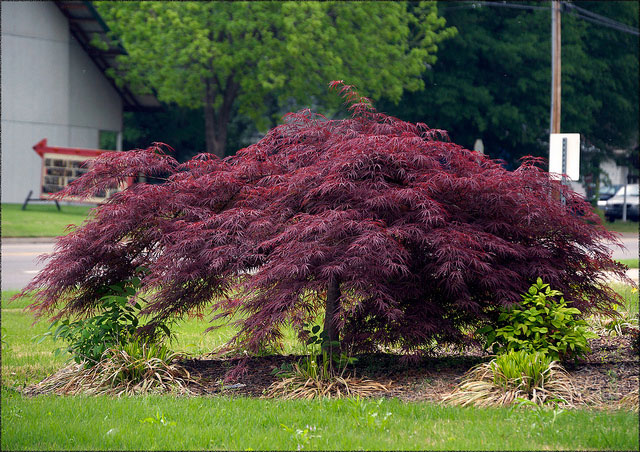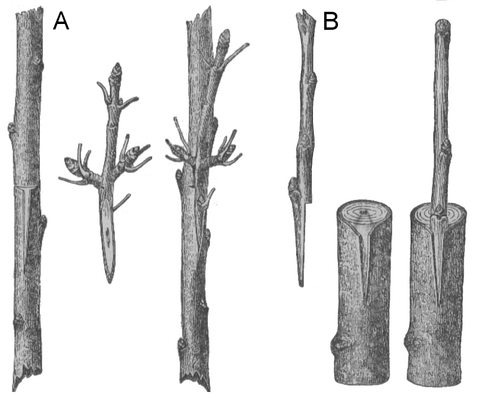
Laceleaf Weeping Japanese Red Maple is known to every plant lover. We would even confidently state that it’s one of the most beautiful, as well as popular, landscape plants to currently exist on Mother Earth. It is part of the Japanese culture just like the Bonsai tree. The short tree is close to the ground, with its average 4 feet height – but what it lacks in height, it makes up for in its width. The branches spread wide from the top of the tree to the ground. Laceleaf Weeping Japanese Red Maple is gorgeous with its trademark deep red foliage and leaves with jagged edges. The tree is eye-catching even during colder seasons when it loses its leaves – the weeping branches have a unique look that is a sign to see. Whether you’re a plant enthusiast or not – it’s hard to walk past this tree without stopping for a second to take in its beauty.
Have you ever noticed the incredibly high prices these trees are sold for at your local plant nursery? Few nurseries have Laceleaf Weeping Japanese Red Maples in stock, but if they do, the trees go for 150$ at minimum. That is because there is only one way to propagate these trees, and that is by grafting.
Grafting – what is it?
Grafting can be called both art and science. It is a process of taking a part of one plant and melding it together with a different plant, resulting in the two plants joining and becoming one. One plant serves as the root system, sometimes also as the stem. The other plant is attached to the side or top of the first plant. The two will eventually grow into one plant – the variety that is the goal from the start.

Grafting is one of the most fascinating forms of plant propagation. However, it is labor intensive, one of the slowest and, some would say, tiresome methods of plant propagation – this is why it’s the least used method for propagating plants. That explains why it’s a mission to find Laceleaf Willowing Japanese Red Maples at nurseries.
Plant nurseries are all about earning profit. Not many businesses want to bother with products that require too much effort – and that is precisely what Laceleaf Willowing Japanese Red Maples and grafting demand. If this plant species is sold at your local nursery, they have most likely bought small trees from someone who specializes in grafting.
However, you should not be scared off from trying grafting just because most nurseries can’t be bothered with it. While it requires patience and time, the process itself isn’t unmanageable. If you want to try your hand at grafting a gorgeous Laceleaf Weeping Japanese Red Maple, read on to find out how. A successful project results in tremendous self-satisfaction.
Give it a read

Grafting Laceleaf Weeping Japanese Red Maple
If you’ve decided to take on a challenge and propagate a Laceleaf Weeping Japanese Red Maple at home, you’ll first need to grow a regular Japanese Maple. You can easily do that by using seeds – read in detail about plant propagation from seeds.
One of the characteristics of Japanese Maple seeds is their hardened coat. Due to that, the seeds should first be pretreated – soak them in hot water before continuing the process. The second step is the longest – put the soaked seeds in a moist peat moss bag and store them in your refrigerator for 100 to 120 days. Only then can they be planted. It won’t take long for the seedlings to start growing.
If your seedlings sprout closely together, transplant them to allow them more room for growth. Before you replant them, ensure that their diameter is between 3/16 of an inch to ¼ inch. The transplantation should ideally be done either in late fall or early spring.
Once you have your Japanese Maple, it serves as rootstock for your propagation project. Since your desired end goal is Laceleaf Weeping Japanese Red Maple, you’ll need a tiny piece of it to attach to your regular Japanese Maple rootstock. Eventually, they grow into one, leaving you with a new Laceleaf Weeping Japanese Red Maple.